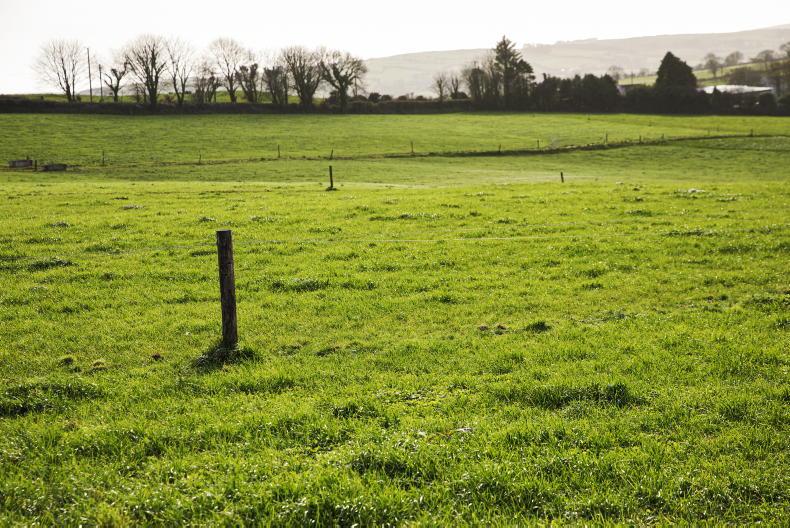North and northwest
A lot of rain has fallen in the last week, making grazing difficult. Most farmers have opted for 12-hour grazing, and even at this you may need to over allocate and underutilise if ground conditions are particularly poor.
Some reports say that some farmers had to house their cows by night to get by.
As well as the difficult grazings, the incessant rain and leafy swards have caused grass dry matter to fall as low as 12-14%. Concentrates and a source of roughage, even as simple as a round feeder of straw at the parlour exit, will help to maintain dry matter intake.
South and east
Since the weekend, much of the south and east has received between 8 and 25mm of rain, which should help alleviate soil moisture deficits for many and encourage grass growth.
However, the recovery won’t be immediate, and farms in particularly dry regions will need more time to bounce back.
As a result, most farms will need to maintain heavy feeding. On average, dairy farms are providing 4kg of feed per day. Farmers should balance the need to feed cows adequately now while also focusing on building up covers for the autumn.
It’s best to concentrate on the immediate task. A couple of weeks of strong grass growth in late August or early September will resolve the grass cover issue.
For farms dealing with soil moisture deficits, the growth surge will eventually come.
For now, the goal is to maintain a grazing rotation of around 25 days or so. With growth rates in the mid-40s and the entire farm available for grazing, feeding 3-4 kg of meal should help sustain this rotation.
Average farm cover should not drop below 500kg DM/ha or 160kg per cow. Even if growth exceeds demand, it’s wise to allow farm cover to build up, as more dry weather could be on the way.
Joe Deane – Carrigaline, Co Cork
We’ve been feeding no meal for the last month. Covers are building away by default. Cows are grazing covers of 1,500 kg DM/ha and graze outs are good.
In June/July our cover went very low, so cows for two rotations were grazing covers lower than 1,000kg DM/ha. This meant very little mechanical fixing occurred this year bar taking out surplus paddocks for bales.
We’ve our third cut on the ground and we plan to bale it up this evening. We should have more than enough to get us through the winter then.
We scanned our cows recently and 11% showed empty, while we had only 4% empty in our heifers.
Stocking Rate (cow/ha) 3
Growth Rate (kg/day) 72
Average Farm Cover (kg/cow) 260
Yield (l/cow) 16
Fat% 5.42
Protein% 4.1
Milk Solids (kg/cow) 1.57
Concentrates 0
David Brady – Stradone, Co Cavan
Cows are back on 12-hour breaks, grazing covers of 1,700 kg DM/ha. Ground is saturated and cows are starting to mark the ground slightly. We got a lot of rain last Monday and it’s been nearly constant since.
It’s been a challenging year. The cows only got out to grass around the middle of April, so production was running 10-11% back around June but we’ve managed to pull this back to 5-6% now.
We’re hoping for a good back end. We’re in a good position for building up grass but we need the weather now to make use of it. We’ve a third cut planned around the middle of September, weather permitting.
Stocking Rate (cow/ha) 3.81
Growth Rate (kg/day) 54
Average Farm Cover (kg/cow) 266
Yield (l/cow) 21
Fat% 4.49
Protein% 3.75
Milk Solids (kg/cow) 1.78
Concentrates 3.5
Donal Patton – Teagasc Ballyhaise, Co Cavan
Farm cover is building away nicely. We have got sufficient rain but any more and the wetter paddocks could be an issue to graze.
Looking at the data, we have only gotten half the amount of rain over the summer than this time last year, so we could be in for a wetter few weeks.
We took out a few paddocks a rotation back so the quality would be right now when we’re building covers.
Grass-only paddocks have got 180kg N/ha to date, while the clover and grass paddocks have got 100kg N/ha. The clover paddocks are being followed with soiled water since the start of May.
Stocking Rate (cow/ha) 2.72
Growth Rate (kg/day) 75
Average Farm Cover (kg/cow) 297
Yield (l/cow) 17.6
Fat% 4.59
Protein% 3.81
Milk Solids (kg/cow) 1.53
Concentrates 3
